Last updated on November 2, 2023

Crashing Footfalls | Illustration by Dan Scott
Cascade has probably become one of my favorite mechanics since I started playing Magic back in 2007. Free spells are always fun and it makes players feel like they're playing more powerful cards, even if the card they cascaded into isn't a strong hit.
Today I’m going to talk about the mechanic in-depth and you'll hopefully walk away with an appreciation for how fun and innovative Cascade really is.
Ready? Let’s go!
How Does Cascade Work?
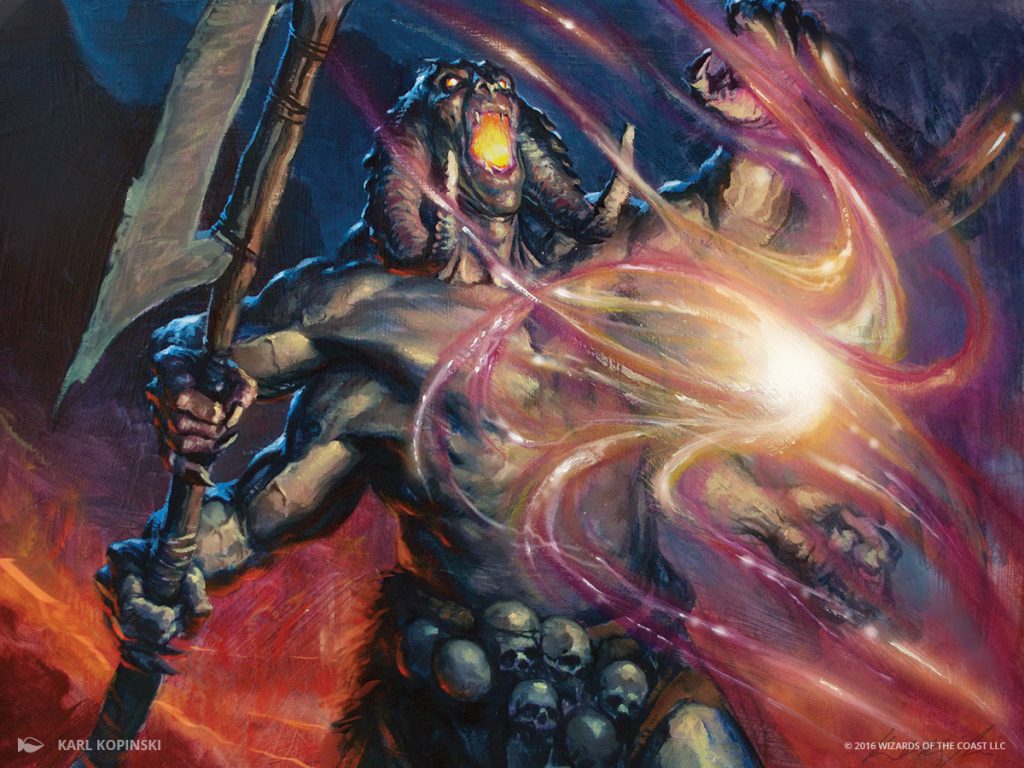
Yidris, Maelstrom Wielder | Illustration by Karl Kopinski
In short, a spell with cascade lets you find and cast a free spell with lesser mana value from the top of your deck when you cast it. Cascade is pretty simple at first but becomes more complex when you start adding more ingredients to the mix.
Here’s a quick breakdown:
- You cast the spell with the Cascade keyword.
- Exile cards face-up from the top of your library until you find a nonland card with a mana value less than the card you cast.
- Cast the card with the lower mana value. This is a “may” option so you can choose to not cast it, but you can’t choose to not cascade. It resolves before the original cascade card.
- Put away all the revealed cards that weren't cast in a random order on the bottom of your library.
- Resolve the original card with cascade.
If you happen to hit a card with cascade, you start this chain again before any other spell resolves. This can get pretty complicated if you're running a lot of cascade cards, so be very careful with each individual trigger.
If you're a visual learner and want a video example, Wizards gave us a fantastic primer for Cascade in 2009. Take a look:
History of Cascade
Alara Reborn was the first set to introduce the cascade mechanic back in 2009, and boy was it a set. Not only was it the only set to be 100% multicolored cards, it also brought the brand-new mechanic: cascade. The first card we saw with the keyword was Bituminous Blast with the first round of spoilers for the set.
The set would go on to make a huge impact across multiple formats. Bloodbraid Elf was a staple in Standard, Extended, and even Modern for a couple of years until it was banned. Ardent Plea, Violent Outburst, and Demonic Dread became staples in decks looking to cheat out the 0-mana value “suspend only” cards from Time Spiral like Hypergenesis and Living End, resulting in Hypergenesis being banned in Extended and Modern.
The mechanic hadn't seen much printing outside of a few cards in Planechase and Modern Horizons and Modern Horizons 2 until the release of Commander Legends which had a cascade archetype for drafts.
Cascade's rules were updated in 2021 to change how they interacted with modal double-faced cards like Shatterskull Smashing from Zendikar Rising and adventure cards like Bonecrusher Giant.
Previously, when you hit a card with a lesser mana value with cascade that had two sides or two separate casting costs, you accepted the lower value and were able to cast either half because the rule simply said, “you may cast that spell without paying its mana cost.” With the new update, you can only cast the part of the card that has a lower mana value than the card you cascaded with.
Is Cascade Evergreen?
Sadly, cascade is not an evergreen keyword. Evergreen keywords are reserved for mechanics that can be used in any set. Because cascade is such a unique mechanic centered around some sort of chaos, it doesn't see printing outside of special sets.
Does Cascade Count as Casting?
Yes, cascade counts as casting, The rules for cascade explicitly state, “you may cast that card without paying its mana cost.” This means that cascade can be prevented by cards like Rule of Law or taxed by effects like Rhystic Study. It can also be countered or removed from the stack with cards like Flusterstorm or Mindbreak Trap.
You’re able to pay additional costs like buyback or kicker but you can’t cast cards for alternate costs like overload since cascading is already an alternate mana cost (a.k.a., free).
Is Cascade an Ability? What Kind?
Cascade is a triggered ability like, “when card enters the battlefield” or “whenever card is tapped” effects, meaning the ability triggers when the requirement is met. In this case, casting a card with the cascade keyword is the requirement.
Can You Respond to Cascade?
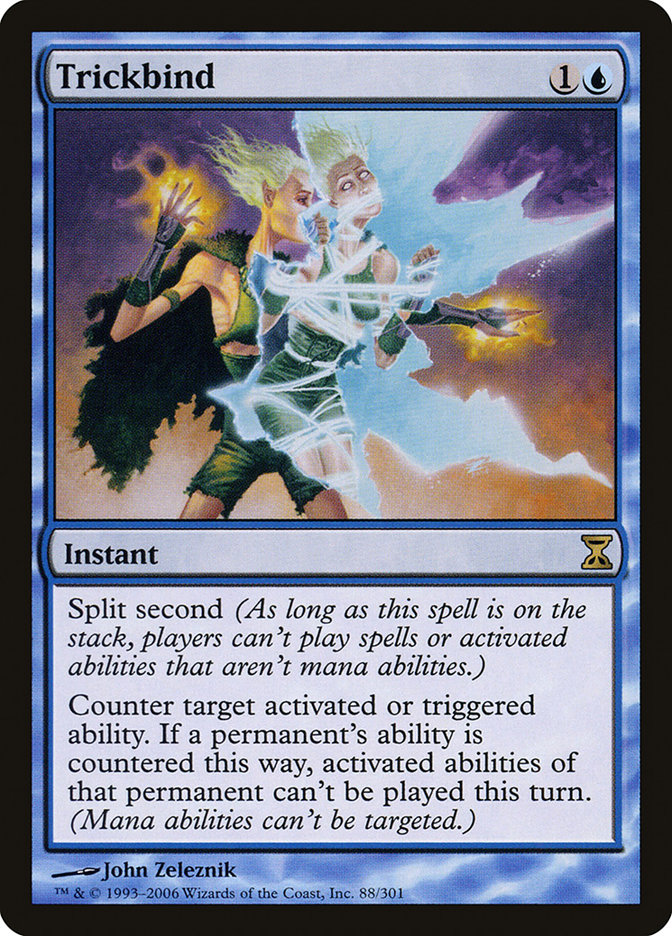
Just like any triggered ability, you're able to respond to cascade. You can counter the original cascade spell (though it still triggers the cascade effect) or counter the cascade ability with Trickbind if you want to be a real rude dude.
Does Cascade Reveal?
Cascade does not reveal in the technical sense, although your opponent still gets to see the cards. It exiles cards from the top of your library, which are always exiled face-up. Exiled cards are always shown face up unless a card says different, so this will reveal some info to your opponents.
Once the cascade mechanic resolves, any “revealed” cards from cascade are put at the bottom of your library in a random order.
Does Cascade Count as Drawing?
No, cascade does not count as drawing! There's nothing in the rules text that mentions drawing a card and none of the cards exiled or cards cast with cascade ever enter your hand unless a different effect says to do so.
What Happens if You Cascade into a Card with Cascade?
You get to start the cascade chain again before any other spell resolves if you hit a cascade card with your original cascade card. This means that you have to resolve the next cascade trigger before the previous trigger fully resolves, which can lead to a beautifully chaotic mess of cards being cast one after the other if you're lucky enough.
Fun anecdote, there was a 5-color cascade deck back in Alara Reborn’s Standard format that had the potential to flip the “Cascade Ultimatum” which was this card combination:
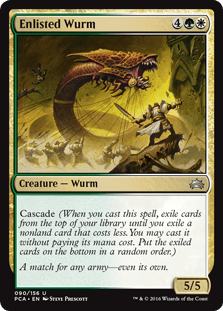

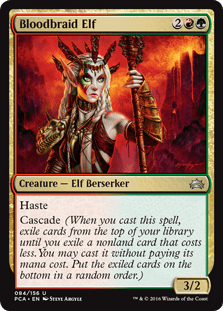
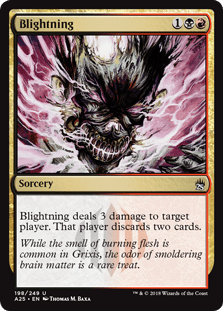
Enlisted Wurm to Bituminous Blast to Bloodbraid Elf to Blightning
Magic was a lot of fun back then. Six mana for a 5/5, a 3/2 with haste, killing a 4-toughness creature, bolting an opponent, and making them discard two cards.
What Do You Do if a Card Says “Cascade, Cascade”?
There's only a handful of cards that have multiple instances of cascade, but they're pretty powerful and are handled a bit differently. You resolve each instance of cascade separately, meaning you'll do the reveal, casting, putting cards away in a random order, and then do it again for the second instance of cascade.

In the case of Apex Devastator, you trigger each instance of cascade separately, four times.
What Happens if You Cascade into a Counterspell?
This is unfortunately a very real possibility. Casting the card you cascade into is thankfully a “may” ability, meaning you can choose to not cast the spell and putting it on the bottom of your library with the other exiled cards.
So you can choose to not cast the counterspell to keep it in your library instead of wasting it if you come across it with cascade.
Can You Cascade into Suspend?

Suspend reads, “rather than cast this card from your hand.” This means you can’t cascade into a card for its suspend cost. But you can still cast the card for its normal cost, like Search for Tomorrow.
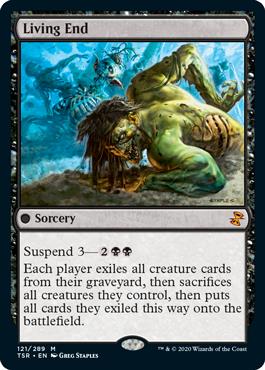
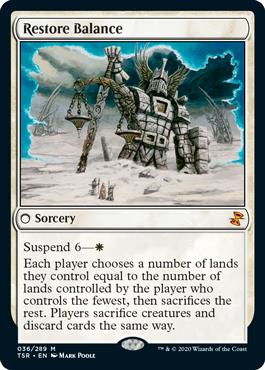
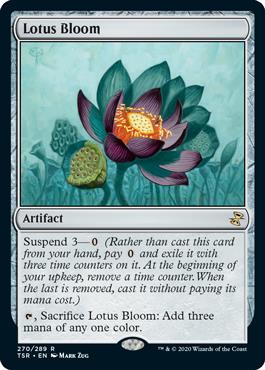
Double-but there are some cards that have suspend and no mana value. This means that if you reveal that card via cascade, you can cast it because its mana value is zero. Cards like Living End, Restore Balance, and Lotus Bloom become a lot better when they're coming into play immediately.
Can You Cascade into Overload?
Overload isn’t something that can be cast for its alternate cost. Because casting the spell for free is the alternate cost of the card, you’re not able to pick a different alternate casting cost.
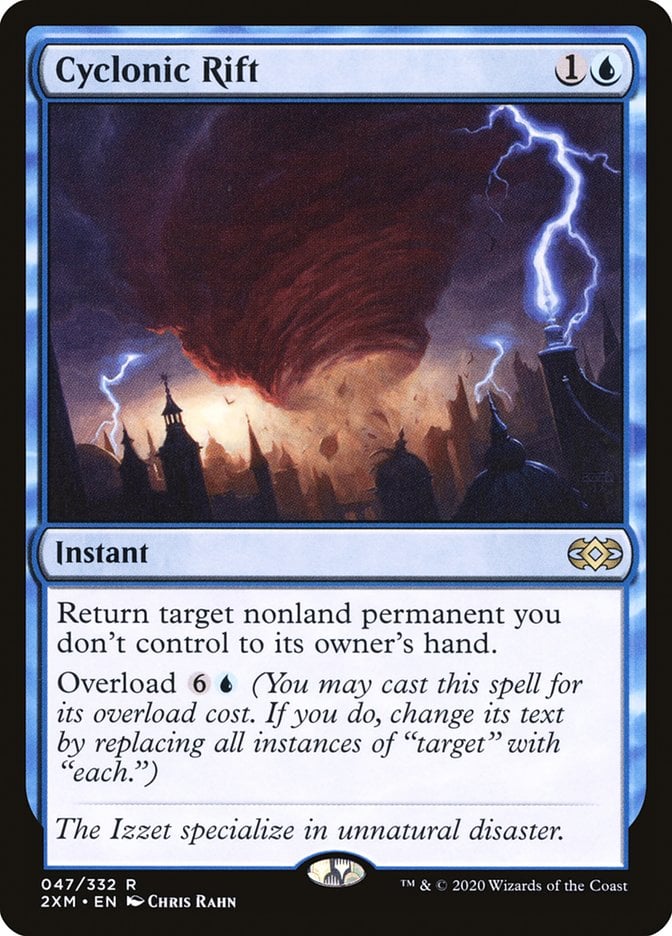
You can still cast the card for its regular cost but Cyclonic Rift is just sad for .
How Does Cascade Work with Split Cards?
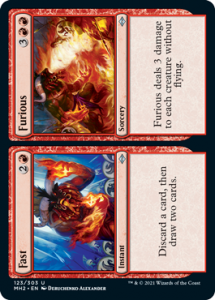
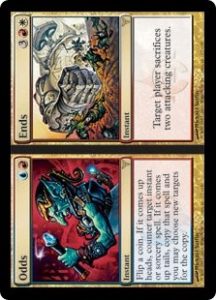
Split cards like Odds // Ends have a mana value that’s equal to both halves of the card combined when they’re not on the stack. If you cast Throes of Chaos into Fast // Furious, the split card’s total mana value is 8 since you have to combine Fast with Furious.
How Does Cascade Work with Modal Double-Faced Cards Like Valki/Tibalt?
This is one of the important reasons why the cascade mechanic was updated in 2021. Because modal double-faced cards only have the characteristics of the card’s front face, you’re only able to cast the front face with cascade.


Players were able to cascade into Valki, God of Lies and cast the Tibalt, Cosmic Impostor back half on turn 1 or 2. Having an incredibly powerful planeswalker as early as possible and dominating the game from then on is a big deal.
Now that the rule has been changed, you’re only able to cast the front face of the card if it has a mana value lower than the card you cascaded with. This means you're no longer able to cast the back half of modal double-faced cards with cascade at all.
Does Cascade Work Differently with Transforming Double-Faced Cards?
Unlike modal double-faced cards, transforming double-faced cards don't have mana values on their back half. But they still only have the characteristics of the front face of the card, meaning they enter as the card’s front face of the card if you choose to cast them with cascade.
The caveat to this is with the new daybound and nightbound mechanic from Midnight Hunt, where cards enter as the appropriate side based on whether it’s currently Day or Night. Older transforming cards don't have this same mechanic and are treated differently.
Can You Deck Yourself with Cascade?
No, you can’t deck yourself with cascade. While you can run out of cards to exile, this doesn't mean you lose the game. You just fail to find a card, shuffle the revealed cards back into your library, and continue the game as normal.
Is Cascade Good in EDH?
Cascade is great in Commander, and it's only gotten more support with Commander Legends.
Maelstrom Wanderer has been a powerhouse for a long time, and Yidris, Maelstrom Wielder is featured in a fringe competitive EDH deck based around cascading and storm combos.
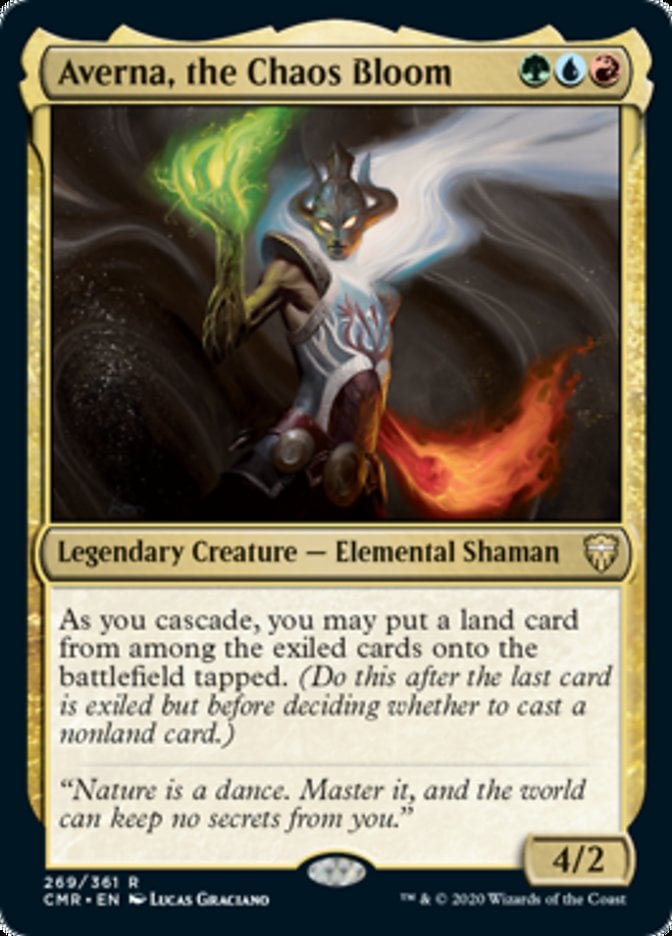
Averna, the Chaos Bloom also makes a great cascade-focused commander that lets you ramp and isn't a big threat at the table unlike Wanderer.
Cascade Card List and Gallery
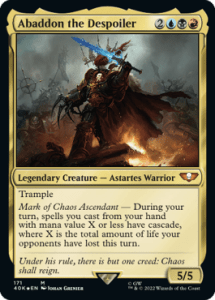

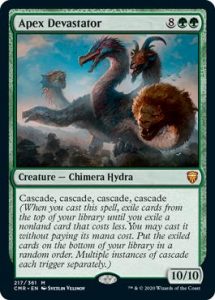

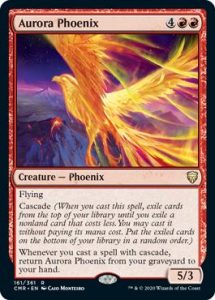
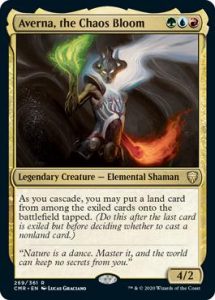
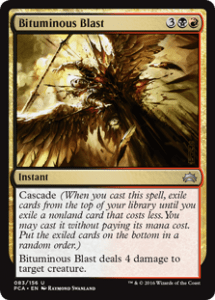
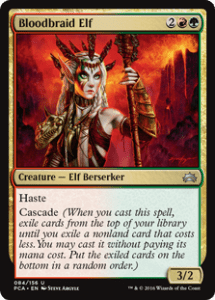
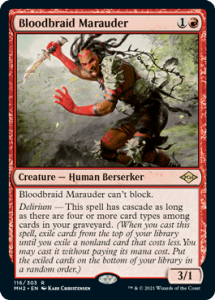
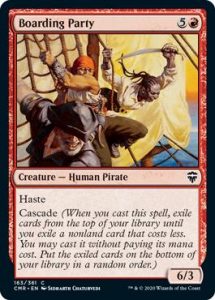


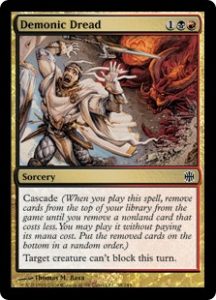
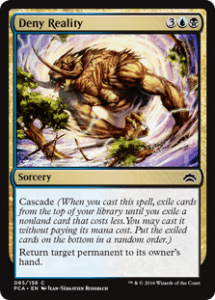
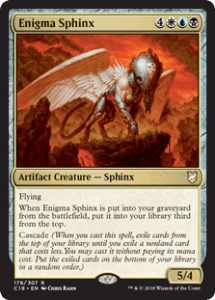
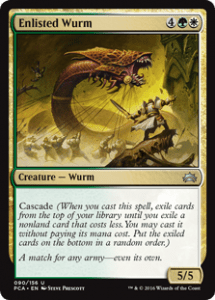
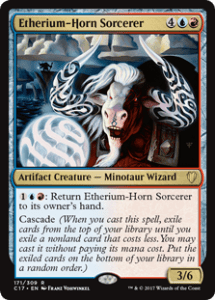
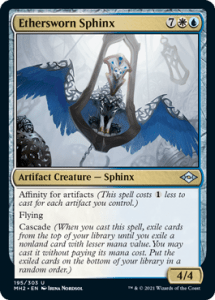

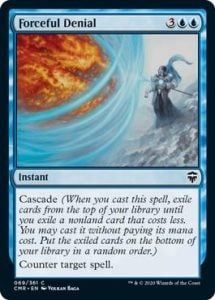
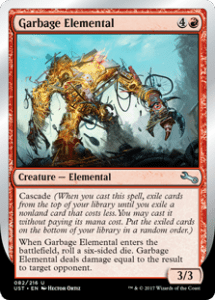
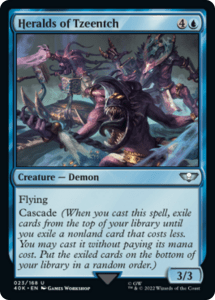
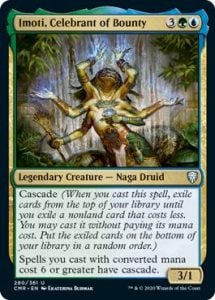

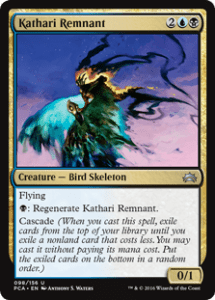

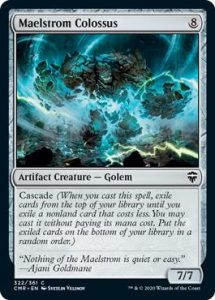
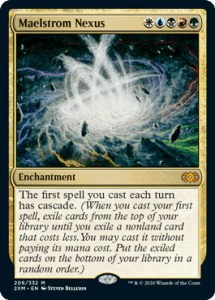




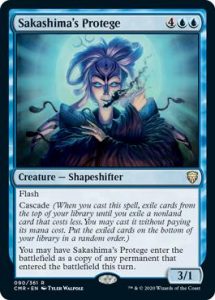
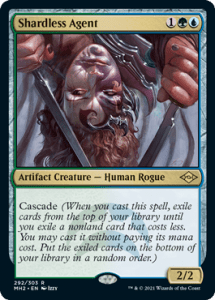

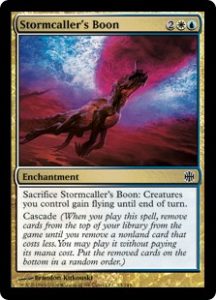

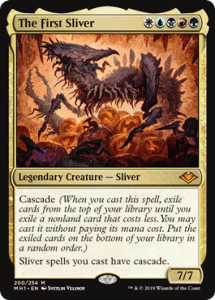
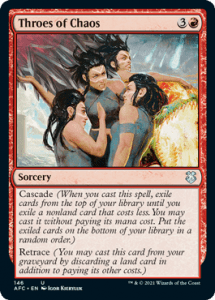
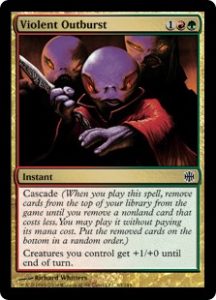
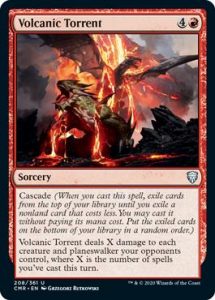
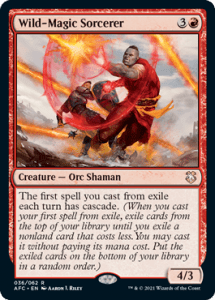
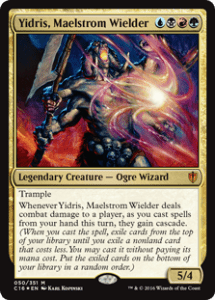
- Abaddon the Despoiler
- Annoyed Altisaur
- Apex Devastator
- Ardent Plea
- Aurora Phoenix
- Averna, the Chaos Bloom
- Bituminous Blast
- Bloodbraid Elf
- Bloodbraid Marauder
- Boarding Party
- Captured Sunlight
- Dark Apostle
- Demonic Dread
- Deny Reality
- Enigma Sphinx
- Enlisted Wurm
- Etherium-Horn Sorcerer
- Ethersworn Sphinx
- Flamekin Herald
- Forceful Denial
- Garbage Elemental
- Heralds of Tzeentch
- Imoti, Celebrant of Bounty
- Ingenuity Engine
- Kathari Remnant
- Let the Galaxy Burn
- Maelstrom Colossus
- Maelstrom Nexus
- Maelstrom Wanderer
- Meteoric Mace
- Natural Reclamation
- Noise Marine
- Sakashima's Protégé
- Shardless Agent
- Sloppity Bilepiper
- Stormcaller's Boon
- Sweet-Gum Recluse
- The First Sliver
- Throes of Chaos
- Violent Outburst
- Volcanic Torrent
- Wild-Magic Sorcerer
- Yidris, Maelstrom Wielder
Best Cascade Cards
Crashing Footfalls
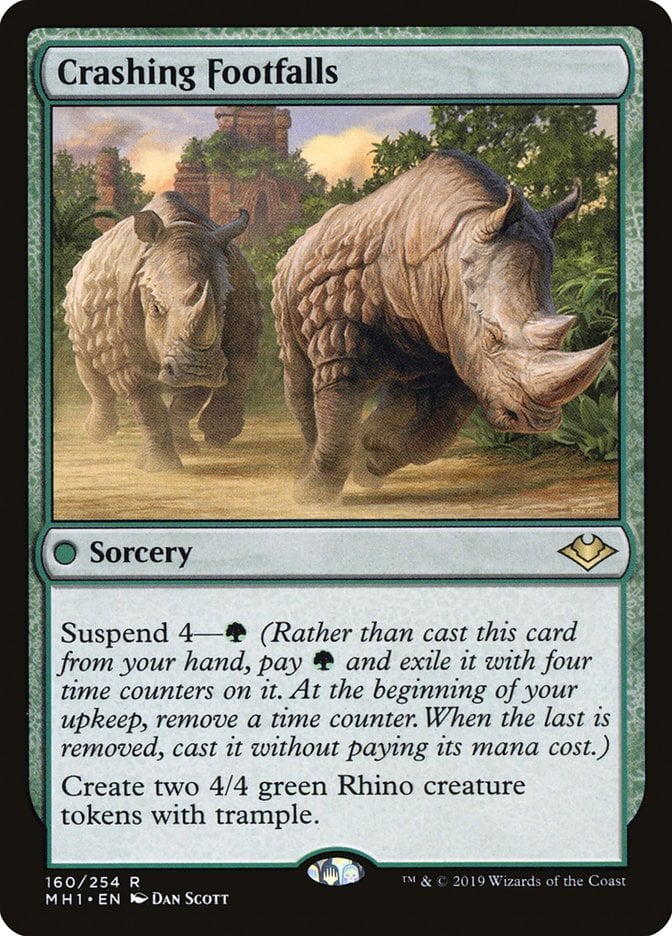
Crashing Footfalls is currently a hot contender for the most played suspend card with the powerful upside of 8-power worth of creatures that’s really easy to cascade into.
Bloodbraid Elf

Bloodbraid Elf has seen on and off play ever since its printing and still sees fringe play in Modern. A 3/2 with haste for is nothing to sneeze at. Adding a free spell on top of that is even better.
Shardless Agent

Shardless Agent finally hit the Modern format with Modern Horizons 2 and it's already making a huge impact. It was already an all-star in Legacy with its own namesake deck., Shardless BUG.
Violent Outburst + Ardent Plea
Violent Outburst and Ardent Plea both see play in a variety of decks, with Outburst seeing the most play thanks to the Crashing Footfalls deck. Because their mana value is so low, you can tune your deck to only cast a specific card or cards (like green sorcery that could make two 4/4 rhinos) or enable cards like Living End.
Maelstrom Wanderer

Maelstrom Wanderer is a great card, whether it’s a commander or part of the 99. Double cascade is very powerful paired with a high mana value, meaning you’ll have a really wide selection of cards to cascade into. Free haste is also awesome with free creature spells.
Yidris, Maelstrom Wielder
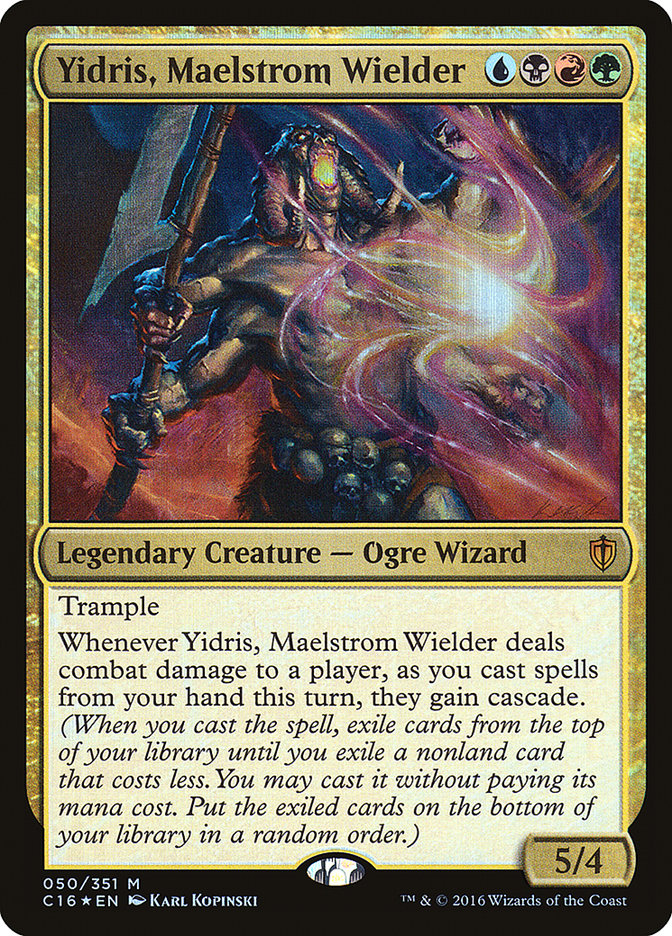
Yidris, Maelstrom Wielder has been a fringe competitive EDH card for a while now thanks to its ability to grant cascade to all the cards in your hand. While it doesn’t have cascade for itself, it’s a powerful enabler that can win games in one combat step.
Call Forth the Tempest

Call Forth the Tempest is a super sweet card. For a massive 8 mana, you get a one-sided board wipe, as well as a double-cascade! Not only will that typically kill everything on the board that isn't yours, but it'll also give you a chance at some of the biggest cards in your deck, for free!
Cascade Deck: Crashing Footfalls in Modern
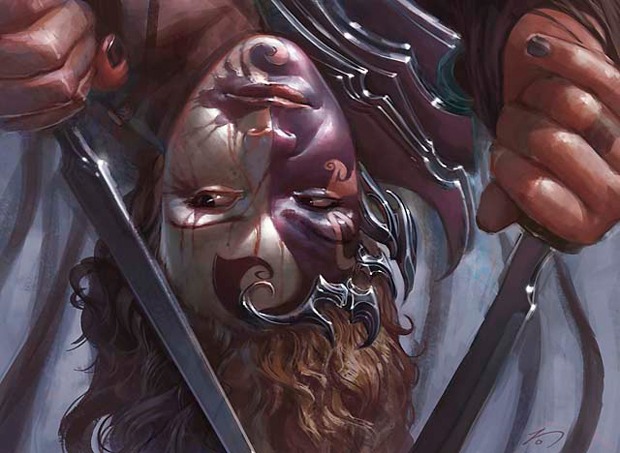
Shardless Agent | Illustration by Izzy
Creature (15)
Bonecrusher Giant x4
Brazen Borrower x3
Shardless Agent x4
Fury x4
Instant (13)
Force of Negation x4
Fire // Ice x4
Dead // Gone x3
Prismari Command x2
Sorcery (9)
Violent Outburst x4
Crashing Footfalls x4
Sea Gate Restoration
Land (23)
Breeding Pool
Flooded Strand
Forest
Gemstone Caverns x3
Island x2
Ketria Triome
Misty Rainforest x4
Mountain
Scalding Tarn x4
Steam Vents
Stomping Ground
Wooded Foothills x3
Sideboard (15)
Blood Moon x3
Endurance x4
Mystical Dispute x4
Force of Vigor x4
This is a great example of the “Crashing Footfalls” deck that’s currently popular in Modern. The goal is pretty simple: cast Shardless Agent or Violent Outburst on turn 2 or 3 to cast Crashing Footfalls for two big 4/4s with trample, then follow them up with counterspells and removal to guide you to victory.
If you look closely, none of these cards have a mana value below 3 aside from your key cascade target, meaning each of your cascade cards hit exactly what you want.
Putting the Chaos Back in the Bottle

Bloodbraid Elf (Alara Reborn) | Illustration by Dominick Domingo
Cascade has always been a fun mechanic, and it's one near and dear to my heart. While it's definitely not the most balanced mechanic out there (thanks Hypergenesis), it's really fun and I’m always happy to see creative uses for the mechanic.
I think we'll see more cascade cards in the future, though probably not in a Standard set anytime soon thanks to how powerful the keyword can be. I'd keep my eyes on Commander Legends 2 for more exciting cascade cards.
What do you think about the mechanic? Do you love it, hate it, not feel anything about it? Let me know in the comments down below or find us over on Twitter to share your opinions there.
That’s all I’ve got for you today. Stay safe, stay healthy, and I’ll see you in the next one!
Follow Draftsim for awesome articles and set updates: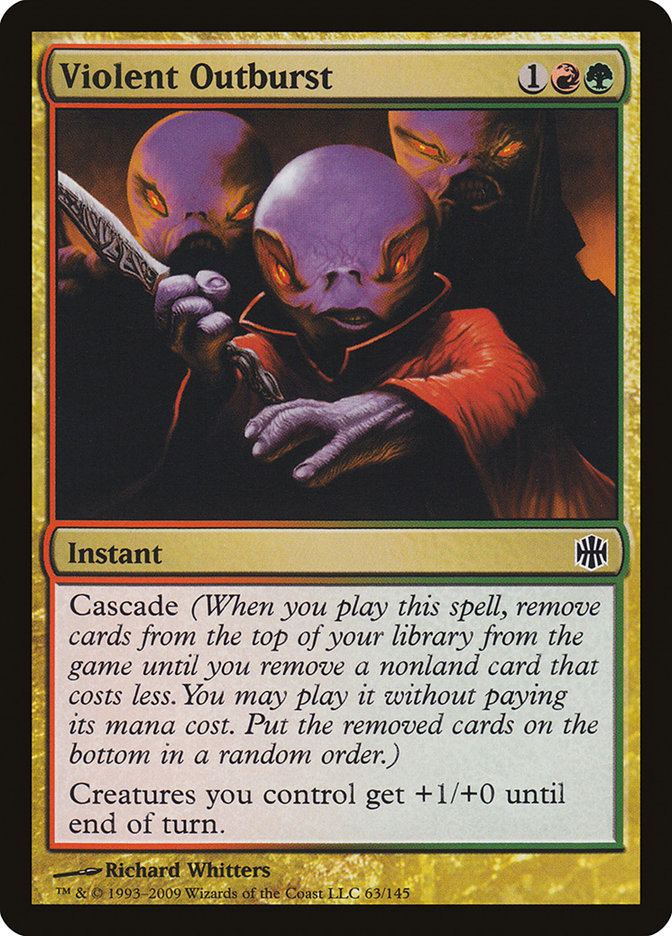
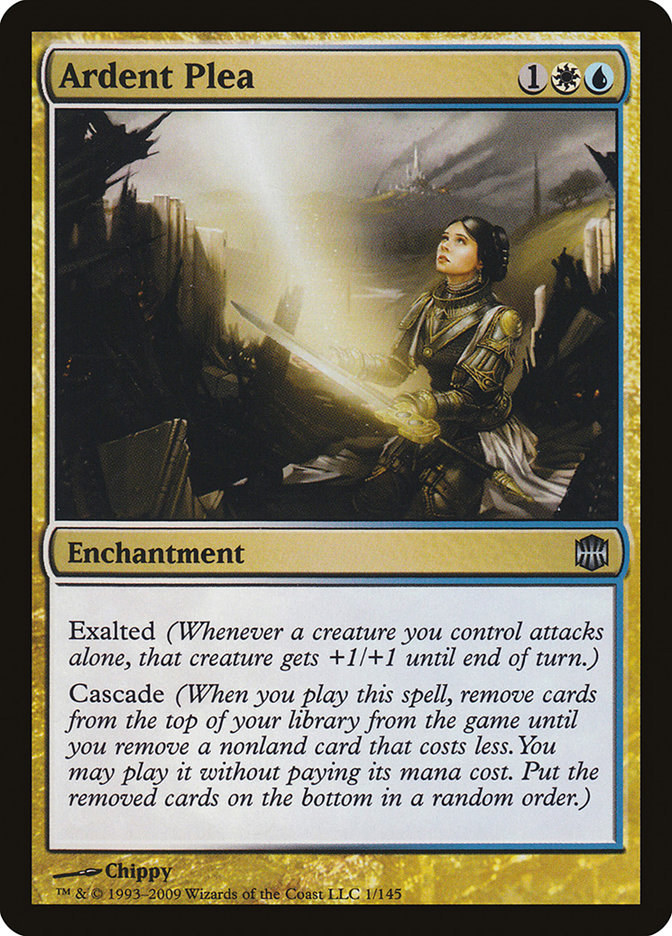
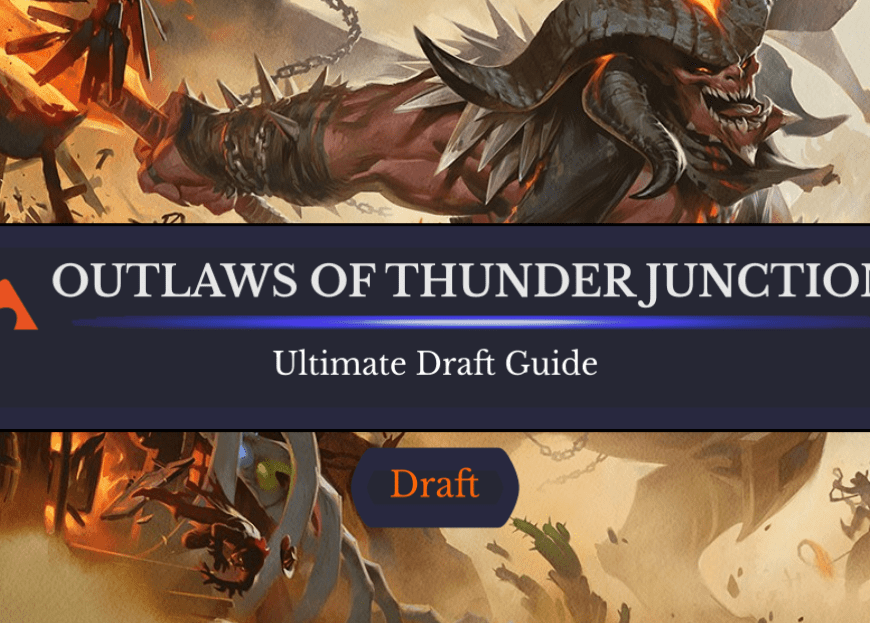
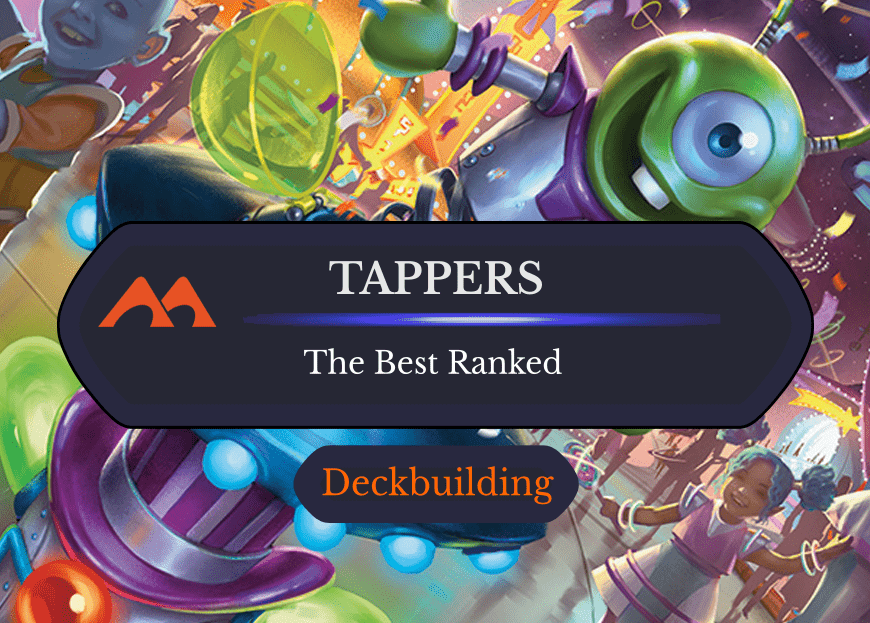
Add Comment